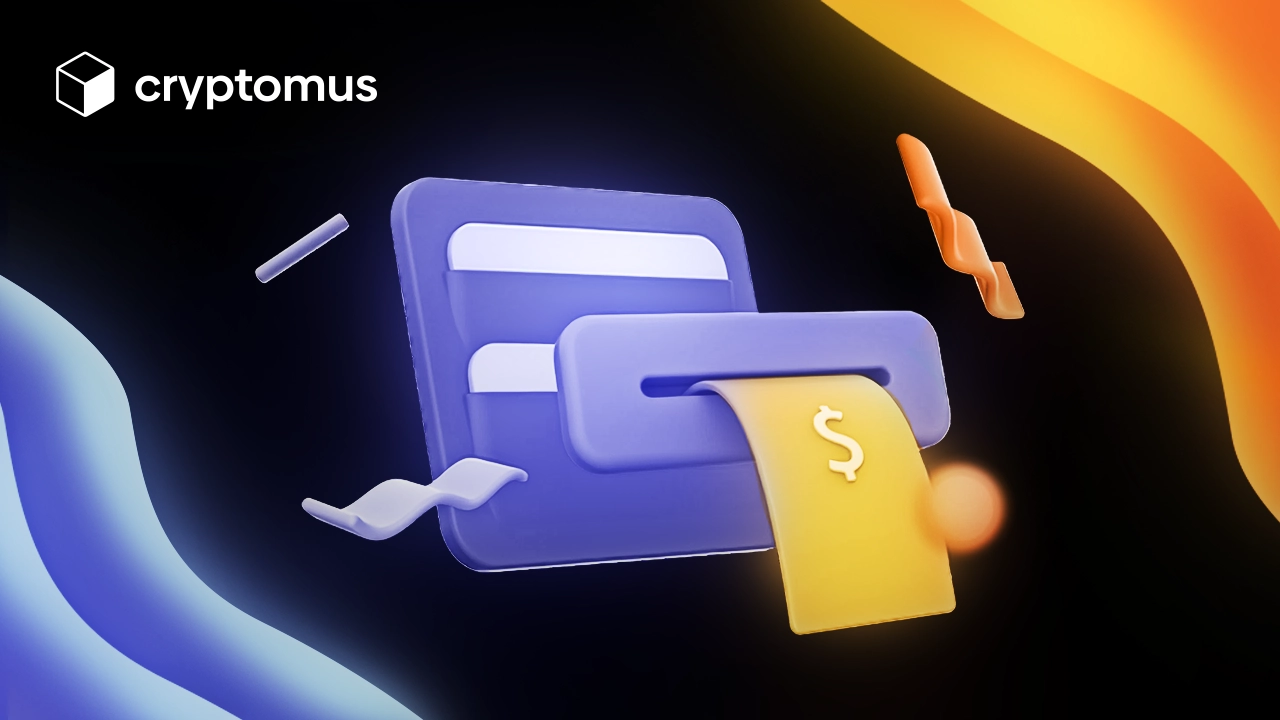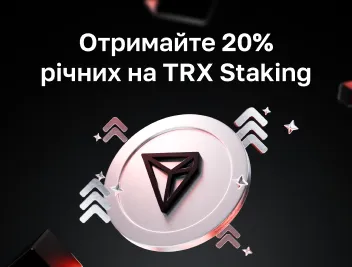
Як вивести свій Біткоіни: Найдешевший спосіб конвертувати криптовалюту в готівку.
Поки ринок криптовалют дозволяє широке управління та розподіл ваших цифрових активів, вкладення коштів на ваш банківський рахунок в кінцевому підсумку буде необхідним. Цей процес може бути складнішим, ніж ви можете очікувати, з використанням кількох методів.
Сьогодні це наша основна тема обговорення. Ми розкриємо ряд методів виведення коштів з криптовалюти, щоб ви вибрали найбільш підходящий підхід.
Способи виведення коштів з Біткоіни та криптовалюти
Таким чином, ви інвестували у криптовалюту, і ваші цифрові активи зросли в цінності. Тепер ви хочете перетворити цю криптовалюту на гроші. Але як це зробити? Спочатку давайте розберемося в основах.
Виведення криптовалюти - це коли ви переказуєте криптовалютні токени на зовнішній гаманець або криптовалютну біржу, і це дозволяє вам повністю контролювати ваші активи. Ви можете вивести всі свої гроші з криптовалюти, але легкість цього залежить від суми та методу, який ви використовуєте.
Крім переказу коштів на зовнішній гаманець, ви також можете надіслати їх безпосередньо на свій банківський рахунок для легкого виведення коштів. Для переказу Біткоіни на банківський рахунок потрібно виконати наступні дії: конвертувати BTC в фіатну валюту, зв'язати ваш банківський рахунок з платформою обміну, та підтвердити переказ. Час обробки може варіюватися залежно від платформи, тому оберіть криптовалютну біржу розумно. Також завжди перевіряйте дані вашого банківського рахунку перед підтвердженням переказу.
Існують кілька методів виведення коштів з криптовалюти. Найпопулярніші способи перетворення Біткоіни на готівку включають:
- Криптовалютні біржі
- Peer-to-Peer (P2P) обмін
- Біткоіни банкомати
- Торгівля OTC
- Криптовалютні дебетові картки
Добре, розберемо кожен варіант і побачимо, що вони пропонують:
1. Криптовалютні біржі
Криптовалютні біржі є найпопулярнішим способом виведення коштів. Вони дозволяють вам легко купувати, продавати або торгувати різними цифровими монетами. Однією з їх найбільших переваг є їх користувальницький дизайн, так що ви можете конвертувати криптовалюту в фіатну валюту всього лише за кілька кліків. Вам потрібно лише вибрати токен та ввести точну суму для продажу. Потім ви можете перемістити кошти на свій банківський рахунок.
2. Торгівля Peer-to-Peer (P2P)
Торгівля P2P дозволяє вам торгувати безпосередньо з іншою людиною. Таким чином, ви можете обійти біржу та мати більше контролю над торгівельними умовами. Підбір ідеального покупця або продавця для ваших криптовалютних операцій може бути складним. Платформи P2P допомагають спростити цей процес, і деякі з найкращих сервісів це Cryptomus та Binance.
Торгівля P2P вважається найдешевшим способом перетворення криптовалюти на готівку, завдяки зазвичай нижчим комісіям порівняно з криптовалютними біржами. Однак, оскільки торгівля P2P реалізується без централізованої біржі, що діє як посередник, ви можете стикнутися з ненадійними покупцями або навіть шахраїв. Щоб уникнути цих неприємностей, всі продавці на Cryptomus проходять систему верифікації KYC, тому ви завжди знайдете надійного продавця для торгівлі.
3. Біткоіни банкомати
Біткоіни банкомати дозволяють виводити токени у реальні гроші за короткий проміжок часу. Зі стрімким зростанням фізичних банкоматів вони є одним з зручних альтернатив для людей, коли їм потрібні гроші в поспіху і вони хочуть уникнути процедур онлайн-торговельних платформ.
На жаль, банкомати ще не є загальним явищем, тому їх іноді важко знайти. Просто переконайтеся, що ви провели деякі дослідження та дізналися, чи є вони поруч з вами.
Існують обмеження на кількість Біткоіни, яку ви можете вивести. У Біткоіни банкоматах є щоденні обмеження в $25,000, що досить для середнього утримувача криптовалюти. Щодо бірж, обмеження можуть відрізнятися і зазвичай досягають до $100,000 в максимум.
Крім того, банкомати беруть плату за виведення грошей, тому від того, чи варто це, залежить від суми, яку ви плануєте вивести.
4. Торгівля Over-the-Counter (OTC)
Торгівля OTC є найкращим варіантом для тримачів криптовалюти з великим обсягом. OTC-дески підтримують великі розміри транзакцій і зазвичай мають налаштовувані умови. Проте вони зазвичай мають високі мінімальні суми для виведення, які не підійдуть для менших інвесторів.
Торгівля OTC дозволяє пряму торгівлю цінними паперами між сторонами, надаючи доступ до ринків капіталу для менших і великих криптовалютних торгівель. Крім того, ринок OTC може бути складним для початківців, тому він більш підходить для досвідчених користувачів криптовалюти.
5. Криптовалютні дебетові картки
Ці картки - це новітня технологія, і ви можете використовувати їх лише для прямих покупок у роздрібних магазинах та для зняття готівки через банкомати. Криптовалютна карта працює як звичайна дебетова карта, але всі кошти з криптовалютного утримання.
Цей спосіб оплати - практичний спосіб вирішення своїх витрат щоденного життя, але існують комісії. Крім того, слід враховувати зміни в курсі валют під час використання карток.
Для отримання додаткової інформації про те, як працюють криптовалютні картки, перегляньте нашу статтю.
Часто задавані питання
Як я можу вивести свою криптовалюту?
Ви можете вивести криптовалюту через платформи P2P, біткойн-банкомати або криптовалютні біржі. Давайте детальніше розглянемо, як працює кожен з них:
- Криптовалютна біржа: Продайте криптовалюту на будь-якій платформі і переведіть кошти на свій банківський рахунок.
- Торгівля P2P: Знайдіть покупця самостійно або на платформі P2P, домовтеся про умови, перекажіть токени і отримайте гроші.
- Біткойн банкомат: Відправте токени на адресу гаманця банкомата і отримайте готівку.
- Торгівля OTC: Зверніться до брокера для великих угод.
Як вивести Біткоіни?
Як ми обговорили, ви можете вивести Біткоіни на реальні гроші через біржі, платформи P2P, банкомати або OTC-торгівлю.
Для перекладу Біткоіни в готівку спочатку потрібно продати його за фіат. Потім ви можете зняти ці кошти. Ви можете продати Біткоіни за готівку за допомогою кількох методів, але криптовалютні біржі та платформи P2P найширше поширені і легкі використанні.
Наявність виведення Біткоіни залежить від платформи. Ви можете вивести Біткоіни в будь-який час з деяких платформ, але інші можуть мати обмежені години для обробки виведень.
Найкращим способом продажу Біткоіни для початківців є через централізовану біржу. Ці платформи легкі у використанні і вони вирішують питання з вибором покупця для вас. Але якщо ви шукаєте менші комісійні, P2P-платформи можуть бути варіантом. Майте на увазі, що P2P-платформи вимагають більше зусиль для пошуку надійного покупця і можуть включати деякий ризик.
Також у нас є керівництво по пошуку партнера для P2P-торгівлі для вас для перегляду.
Як вивести криптовалюту з (OTC) торгівлі?
Торгівля OTC не призначена для швидкого виведення грошей. Першим кроком є знаходження брокерської компанії, яка знайде відповідного покупця для ваших токенів. Після того, як продаж відбувся, ви отримаєте свій виплату.

Як я можу вивести свою криптовалюту на мій банківський рахунок?
Щоб вивести Біткоіни на ваш банківський рахунок, слід дотримуватися цих кроків:
- Продати BTC на фіатну валюту
- Зв'яжіть свій банківський рахунок з платформою обміну
- Підтвердіть свою особу
- Перевести кошти на свій банківський рахунок
Чи є виведення Біткоіни миттєвим?
Виведення Біткоіни не завжди миттєве, оскільки всі платформи мають різну швидкість обробки. Більшість виведень завершуються за кілька годин, але деякі можуть зайняти більше часу. Декілька обмінів дозволяють вивести гроші швидше, але ви повинні сплатити за це спеціальну комісію.
Чому моє виведення BTC займає так багато часу?
Виведення BTC може затримуватися через необхідність їх верифікації мережею. Транзакції з вищими комісіями зазвичай обробляються швидше. Зайняті періоди на мережі Біткоіни також можуть сповільнити процес.
Чому я не можу вивести Біткоіни?
Ви, можливо, не зможете вивести Біткоіни, якщо у вас недостатньо монет у вашому гаманці для виведення з врахуванням комісій. Інші причини можуть включати високу вартість транзакції або тимчасові проблеми на платформі обміну.
Як вивести Біткоіни за допомогою платформ P2P?
Використання платформ P2P для виведення BTC не складне. Для цього слід дотримуватися цих кроків:
- Виберіть платформу P2P
- Створіть і перевірте свій обліковий запис
- Знайдіть покупця
- Відправте запит на торгівлю
- Обговоріть умови
- Укладіть угоду
- Отримайте готівку
- Перекажіть готівку на свій банківський рахунок
Як вивести Біткоіни за допомогою криптовалютних бірж?
Щоб вивести Біткоіни, продайте токени на криптобіржі, а потім перекажіть гроші на свій зв'язаний банківський рахунок. Це простий процес, який більшість бірж роблять простим. Щоб продати Біткоіни, вам слід:
- Виберіть надійну біржу
- Завершіть верифікацію та створіть торговий обліковий запис
- Зв'яжіть свій банківський рахунок
- Перейдіть до розділу торгівлі та продайте Біткоіни
Далі перейдіть до виведення і переведіть гроші на свій банківський рахунок. Чи потрібно вам сплатити за виведення Біткоіни буде залежати від біржі, яку ви обрали. Деякі біржі встановлюють комісійні ставки, які відрізняються від типу токена, який переказується, і кількості токенів, що беруть участь.
Ви можете прочитати наше керівництво по найбільш доступним криптобіржовим платформам, щоб легко вирішити, яку з них використовувати.
Як я можу вивести свою криптовалюту на банківський рахунок за допомогою банкоматів?
Біткойн банкомат працює за тим самим принципом, що й звичайний банкомат, але не зовсім. Щоб вивести Біткоіни з банкомату, вам потрібно буде відправити свої токени на QR-код, згенерований машинною. Потім зачекайте кілька хвилин і заберіть готівку.
Як вивести Біткоіни з низькими податками?
На жаль, неможливо повністю уникнути оподаткування. Але застосування деяких методів дозволяє уникнути значних податкових витрат. Ось стратегії, які ви можете спробувати:
- Тримайте протягом року: У США криптовалютні утримання є активами капітальних прибутків. Якщо ви продадите Біткоіни після тримання його протягом року, ви отримаєте меншу податкову ставку.
- Розгляньте криптокредит: Ви можете позичити гроші, де ваш Біткоіни виступає як застава. Кредити не оподатковуються, тому ви зможете отримати доступ до готівки без оподаткування.
- Стратегічні витрати: Розгляньте використання BTC безпосередньо для покупок, якщо це допускається. Таким чином, ви уникнете виведення грошей і податків.
Крок за кроком посібник з виведення криптовалюти через біржі
Є глибокий посібник, який допоможе вам конвертувати та вивести ваші криптовалюти найефективнішим способом.
Крок 1: Вибір правильної криптобіржі
Не всі платформи криптовалют однакові. Перш ніж обирати той, який використовувати, враховуйте такі фактори, як безпека, підтримувані криптовалюти, методи виведення та комісії.
Крок 2: Налаштування методу виведення
Після вибору найкращої для себе біржі завершіть реєстрацію на вибраній платформі і пройдіть процес верифікації. Важливою частиною цього зазвичай є підключення вашого банківського рахунку. І важливо подвійно перевірити, інакше в майбутньому може виникнути затримка.
Крок 3: Ініціювання процесу виведення
На платформі повинен бути розділ виведення, де вам потрібно буде вказати всі деталі. Виберіть криптовалюту, яку хочете продати, введіть суму та вкажіть, як ви плануєте вивести.
Крок 4: Підтвердження вашої особи (якщо потрібно)
Деякі біржі проводять верифікацію особи з міркувань безпеки, особливо якщо ви плануєте вивести криптовалюту великими сумами. Для досягнення цього вам потрібно буде пройти процедуру перевірки KYC та надіслати свій ідентифікаційний документ або зробити селфі.
Крок 5: Підтвердження та завершення виведення
На цьому етапі важливо перевірити всі деталі вашого запиту ще раз. Це включає суму, спосіб оплати одержувача та комісійні. Потім вам потрібно буде подати запит. Час обробки залежить від декількох факторів, які ми розглянули раніше в цій статті.
Особливості процесу виведення криптовалюти
Процес виведення впливає на різні фактори, такі як обрана платформа, метод виведення та регулювання, забезпечуючи плавний та ефективний досвід. Ось речі, які варто врахувати при виведенні ваших криптовалютних токенів:
- Податкові наслідки: Залежно від вашого місця знаходження, продаж криптовалюти може призвести до оподаткування прибутків від капіталу. Переконайтеся, що ви провели ретельні дослідження або звернулися до фахівця з податків для конкретних обов'язків та вимог щодо звітності.
- Заходи безпеки: Приділіть пріоритет безпеці під час виведення, використовуючи надійні біржі. Не забудьте активувати 2FA та завжди використовуйте надійні паролі. Будьте обережні щодо спроб вилучення даних та шахрайських дій.
- Курси обміну: Комісійні змінні параметри серед різних платформ, і ми рекомендуємо порівняти їх з іншими біржами перед продажем вашої криптовалюти.
- Розгляньте продаж в стабільні криптовалюти: Стабільні криптовалюти прив'язані до фіатних валют, тому вони точно зменшують волатильність та полегшують виведення.
Чи виявився корисним цей посібник з виведення криптовалют? Ми б хотіли почути ваші улюблені методи перетворення криптовалютних утримань на готі
Оцініть статтю








коментарі
0
Ви повинні увійти, щоб залишити коментар